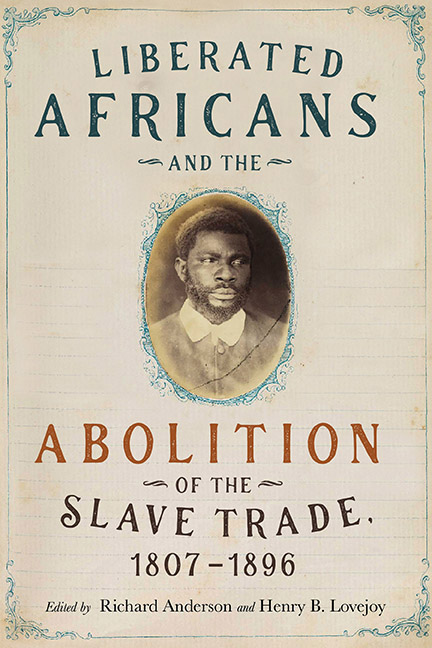Book contents
- Frontmatter
- Dedication
- Contents
- List of Illustrations
- Acknowledgments
- Introduction: “Liberated Africans” and Early International Courts of Humanitarian Effort
- Part One Origins of Liberated Africans
- Part Two Sierra Leone
- Part Three Caribbean
- Part Four Lusophone Atlantic
- Part Five Liberated Africans in Global Perspective
- Part Six Resettlements
- Bibliography
- Notes on Contributors
- Index
4 - Liberated African “Children” in Sierra Leone: Colonial Classifications of “Child” and “Childhood,” 1808–19
Published online by Cambridge University Press: 21 March 2020
- Frontmatter
- Dedication
- Contents
- List of Illustrations
- Acknowledgments
- Introduction: “Liberated Africans” and Early International Courts of Humanitarian Effort
- Part One Origins of Liberated Africans
- Part Two Sierra Leone
- Part Three Caribbean
- Part Four Lusophone Atlantic
- Part Five Liberated Africans in Global Perspective
- Part Six Resettlements
- Bibliography
- Notes on Contributors
- Index
Summary
In 1819, Captain Kelly of HMS Pheasant seized the Portuguese schooner Nova Felicidade, which was carrying seventy enslaved Africans. As Sierra Leone was transitioning into the era of the mixed commission in 1819, this schooner was the last slave vessel adjudicated by Sierra Leone's vice-admiralty court. The composition of the vessel's cargo included a large number of children—61.4 percent of those on board, or forty-three individuals, were classified as children—and, as recent studies have demonstrated, this was characteristic of the slave trade in the nineteenth century. Between 1808 and September 1819, Royal Navy patrols and private vessels engaged in suppression activities released more than twelve thousand liberated Africans in Sierra Leone. The 12,137 liberated Africans recorded in the register of liberated Africans for this period does not correspond to all people embarked on board the slave vessels captured. However, it represents the number of Africans who survived and were registered after their arrival and release in Freetown. This diverse population of Africans of different ages, genders, and origins was brought to Sierra Leone through forced migration. The register of liberated Africans systematically recorded their names, ages, sex, heights, and physical characteristics.
In this chapter I focus on understanding the colonial classification of children that was used for all liberated Africans who arrived in Sierra Leone in the nineteenth century, through undertaking a systematic analysis of this first group of arrivals. Defining “child” among the liberated Africans in Sierra Leone is difficult and unclear. However, this research demonstrates that there was a diversity within the classification of an “enslaved child,” and it diverges from the classification of a liberated African child. The chapter focuses on children who arrived between 1808 and 1819 and “were among the first recaptives to experience forced resettlement in the Crown colony.”
The classification of liberated Africans as children was influenced by a number of factors, including policies for the distribution of prize money, British perspectives on children, the relationship between age and height, and even the interpreters’ role in the process of registration. This classification and its restrictions were established by the Captured Negro Department in the first years of recapture and adjudication by the vice-admiralty court, and they relate to the first attempts to classify the liberated Africans as children or adults.
- Type
- Chapter
- Information
- Publisher: Boydell & BrewerPrint publication year: 2020
- 1
- Cited by

